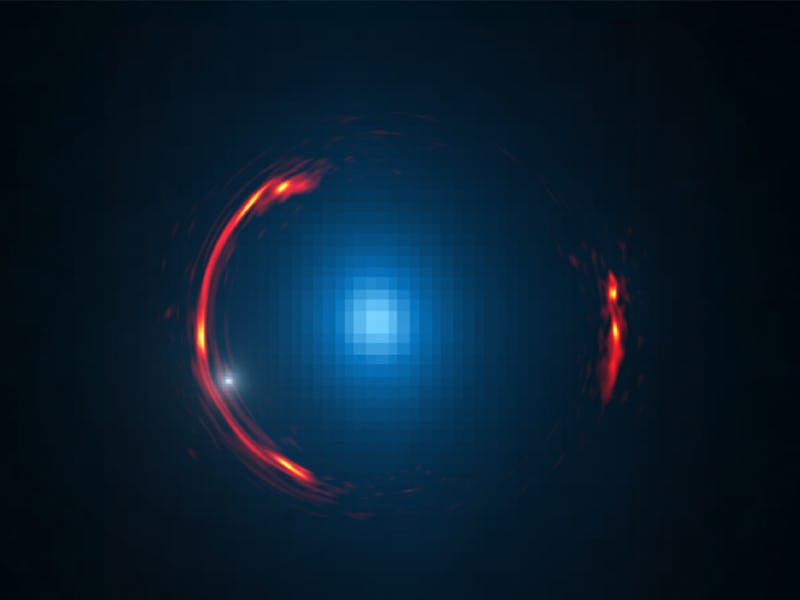Astronomers Find a Dwarf Dark Galaxy Hiding in Space
A celestial treasure lurking in the dark could hold answers to the mystery of dark matter.

Life is like a box a galaxies. You never know what you’re going to get. A team of astronomers from around the United States have found a dwarf dark galaxy hiding away within another, larger galaxy about 4 billion light-years away. That’s a pretty startling discovery alone — but as a kicker, the findings could help astrophysicists better understand the mysteries surrounding dark matter.
A dark galaxy is basically a galaxy with few or no stars — which, you might know, is kind of an essential part of what galaxies are all about. But even though the lights are out, these bodies still contain significant amounts of the gas and dust we associate with galaxies.
The Stanford team managed to spot one such dark galaxy in the midst of a gravitational lensing event (which is where a chunk of matter bends the light from a source as it travels toward an observer through the force of its gravity) captured and imaged in 2014.
Through an analysis of this event, the team uncovered the fact that a dwarf dark galaxy was lurking within the halo of a galaxy ever closer.
“We can find these invisible objects in the same way that you can see rain droplets on a window. You know they are there because they distort the image of the background objects,” said Stanford University’s Yashar Hezaveh, the lead author of the study, in a news release. “In the case of a rain drop, the image distortions are caused by refraction. In this image, similar distortions are generated by the gravitational influence of dark matter.”
Dark matter is everywhere in the universe. Although we cannot see it, it comprises 84.5 percent of the total mass of the universe, and interacts with ordinary matter in ways we don’t always realize — such as gravitational events. To find a dark galaxy at the root of a gravitational lensing event is an incredible find.
The researchers estimate that the clump of star-less mass they’ve found is about 0.001 times the mass of the Milky Way, and likely dominated by dark-matter due to its strange relationship with the larger galaxy.
If that’s true, the new findings might be a critical opportunity for better understanding the nature of dark matter. Although we can’t see dark matter, we should be able to measure its temperature. Astronomers right now are interested in learning more about potential dark matter clumps that have built up around distant galaxies. The new study suggests that the majority of dwarf galaxies in the known universe are not visible because they might just be composed of invisible dark matter — but measuring it through temperature data could be an option.